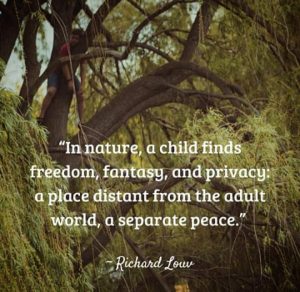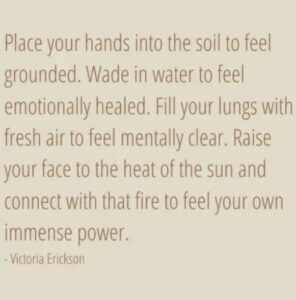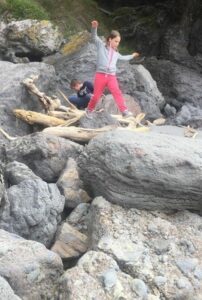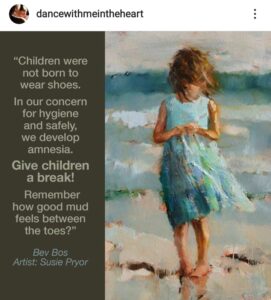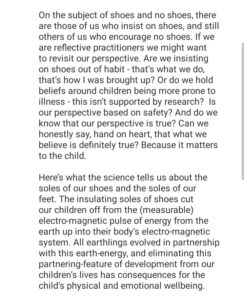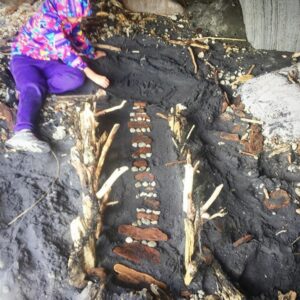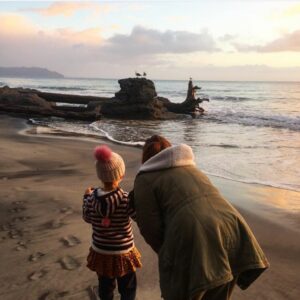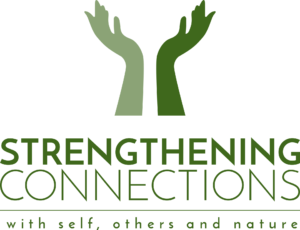Nature is a space for learning, connection and grounding. It promotes good mental health, imagination, creativity, curiosity, problem solving and respect. We MUST value nature and the outdoors as a key learning space for our children. It is a place full of magic, wonderment and discovery.
Research shows, children who regularly engage in unstructured play outdoors, have improved emotion regulation, confidence and cognitive functioning.
Richard Louv has researched and documented the negative consequences that can occur when children have a childhood disconnected from nature.
Nature helps us (children and adults) to feel calm, connected and grateful, as we breathe fresh air and ground our feet on the earth.
How do we foster a connection with nature for our children?
First, we must connect with nature ourselves. Embrace nature. Go outside. Stop and notice. Take time to connect.
Be the change you want to see.
Role model respect, connection, curiosity and joy. Its time to change our attitude
As you embrace and model connection, your children, will also connect.
Respect – the earth mother/papatuanuku,
Teach and model respect and love for our land to foster a sustainable future – care for the earth or we have nothing to live for in the future.
Your children will see you respecting Papatuanuku/earth mother and will learn about kindness, connection and sustainability, through your actions.
Collect only from the ground and return treasures to nature when finished with them. Take only for purpose.
Show respect for all living things: trees, insects, birds, butterflies and bees.
Take notice, give respect to the weather. In New Zealand, you can use knowledge and understanding of Maori Atua and talk about Tawhirimatea/God of winds and storms, and do not underestimate the power of nature.
Be curious. Learn to read the signs of nature.
Research the different bird songs and their calls, find out how they tell you of incoming weather. Learn about how the different trees swaying read varied knots of wind.
Be prepared.
Read the signs and be sure to dress and act accordingly.
“No such thing as bad weather, only bad clothing”. – Alfred Wainwright
Let them play
In nature, the learning is fun, its endless and it’s ever changing.
Allow the child to drive the learning.
When children show interest and ask questions, reciprocate the interest in their inquiry.
Let them drive their learning and play the assistant.
When they ask questions, pretend you dont know the answers … encourage research and thinking. “Im not sure… / I wonder why? / How could we find that out?”
Even if you know the answer, dont answer it for them. Ask open questions, promote research and encourage thinking. Give them time and space to think.
Allow them the opportunity of discovery.
Let them get dirty and get a scratch.
Let them climb trees (see Climbing … trees!), scale mountains/dunes, go off track, let them balance along that log or wade through the water.
You are there, you will keep them safe, IF anything was to happen. The key is to only intervene if they fall in to danger..remember:
“If you want your children to grow into capable, independent adults, give them space to make their own decisions without controlling their every move.
Let them try,
Let them fail.
It’s not about them always getting it right,
It is learning not to be afraid to try.”
-Brooke Hampton
When you dont allow your child to take small risks when they are younger, they are less likely to take bigger risks when they are older.
It is better for children to learn about connection, intuition, balance and risk taking now, than on a higher, more dangerous scale when they are older. Allow your child to be free in nature.
****************************************
Go barefoot wherever possible
“Shoes insulate humans from the earths healing energy”
Here’s what ‘Dance with me in the Heart’ say about shoes and being barefoot… follow them on Instagram and Facebook for inspirational and educational content.
Barefeet for balance, connection and grounding.
*****************************************
What does learning look like in Nature
There is learning available to us, everywhere in nature.
The lifeforce in itself is incredible with infinite learning opportunities.
We have to be curious.
Sit and watch the clouds, what do you see? Use your imagination. Tell a story – this is creative expression, language, literacy.
Rummage the forest floor, can you find a stick shaped in the first letter of your name? Draw in the sand/dirt? Early Literacy learning, gross motor skills.
Collect treasures – gumnuts, pinecones, shells, rocks or similar.
Sorting and ordering, representation, counting, size and shape = mathematics
Make ‘nature’s perfume’ (see 5 experiences to foster Connection with Nature). Mixng dirt/sand with water? Watch the tide? Questions or discoveries about the weather?
Eco-literacy and Science, slearnjbg through senses, promotes curiosity and language.
Build a fort, a den, a nature kitchen, or a fairy home? Construction, team work, planning, thinking and language.
Climbing, balancing, running, jumping are great physical activities which foster problem solving, determination, negotiation, perseverance (See Climbing … trees!).
It’s all there. Nature IS the best classroom.
Bring nature inside to continue fostering the connection. Plants, clay, loose parts, etc. For more, read Loose Parts – as Learning Resources
“When your teach a child something you take away forever, their chance of ever discovering it for themselves”
– Jean Piaget

